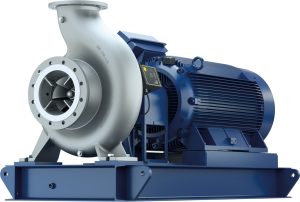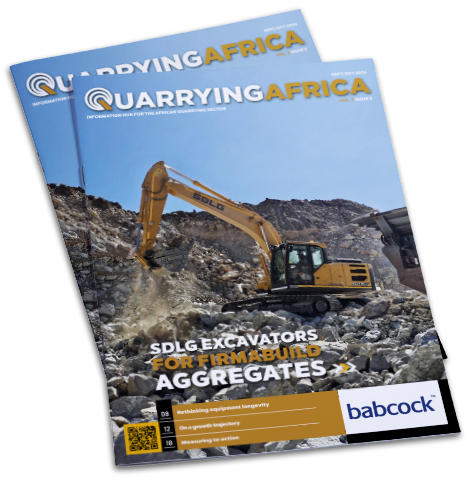Afrimat has released the findings of the Afrimat Construction Index (ACI) for the fourth quarter of 2022. The ACI is a composite index of the level of activity within the building and construction sectors in South Africa.
According to economist Dr Roelof Botha, who compiles the Index on behalf of Afrimat, the poor performance of the economy during the last quarter of 2022 was evident in construction sector activity, with the ACI faring marginally worse than the decline in real GDP of 1,3% quarter-on-quarter. “The year-on-year performances were nevertheless positive, with the ACI’s improvement of 1,9% outperforming the economy as a whole,” says Dr Botha.
One of the highlights is the welcome return to positive growth for value added by the construction sector, both on a quarter-on-quarter and year-on-year basis. It is worth noting that the construction sector component of GDP only includes the value added by contractors, whilst the ACI is based on a composite index of construction sector activity that includes another eight indicators.
“It is thus a substantially more comprehensive barometer of the state of the construction sector, as illustrated by the fact that two of its indicators, i.e., the value of wholesale trade in construction materials, and hardware sales (retail), amounted to a combined R69,7-billion in the fourth quarter, compared to a construction sector contribution to GDP of only R36,8-billion.”
Dr Botha points out that the ACI has not yet managed to claw back the structural decline from its record high of 143.6 index points in the third quarter of 2016. “Although, at an index value of 120.9, the ACI is almost 21% higher than the base period, i.e., the first quarter of 2011, until such time as a marked improvement of investor confidence occurs, growth in the construction sector is likely to remain muted.”
Five of the nine individual indicators comprising the ACI recorded increases in the fourth quarter, compared to the same quarter in 2021. Over the past year, the star performer was the value of wholesale sales of construction materials, with an improvement of 9,3%.
“Hardware retail sales also provided a boost to the ACI on a quarter-on-quarter basis, with an increase of 8%, but the remuneration of construction workers was the best performing indicator, compared to the third quarter of 2022, achieving a double-digit increase.”
According to Dr Botha, two key reasons for the continued sluggishness experienced by the construction industry are the sharp increases in interest rates and the dire state of the country’s municipalities.
“In line with orthodox macroeconomic theory, higher interest rates are inversely correlated to GDP and, as a general rule, also lead to subdued construction and property market activity. It is not surprising, therefore, that new mortgage bond approvals administered by BetterBond started on a declining trend from the end of 2021, when the Reserve Bank’s hawkish monetary policy kicked in. Since then, the cost of credit – and capital – as measured against the prime overdraft rate, has increased by 54%.”
Dysfunctional municipalities also serve to explain part of the problem with the declining trend in public sector infrastructure spend. The table above lists the key spending plans for infrastructure announced in the 2023/24 budget, which boasted a fiscal revenue overrun of close to R95-billion.
The total for the three tiers of government (excluding state-owned enterprises) amounts to an impressive R157-billion, but 39% of this is channelled to the provinces and municipalities. Dr Botha points out that National Treasury, which is prepared to transfer an amount of more than R61-billion for infrastructure spending to the provinces and local governments, has admitted that, out of a total of 257 municipalities, there are 175 that might be on the brink of a crisis. Of these, 151 municipalities are deemed “bankrupt and insolvent”, and are unable to pay creditors and third parties, including the South African Revenue Service and pension funds.
“It’s therefore fairly obvious that the majority of the country’s municipalities are simply not in a position to spend transfers from National Treasury earmarked for infrastructure in a manner commensurate with the needs of their respective communities.”
Dr Botha adds that the only way to improve the ability of local governments to repair, maintain and expand infrastructure is for comprehensive private sector involvement at every stage of the process, from planning and tender evaluation to execution, and monitoring and evaluation.
Afrimat’s CEO, Andries van Heerden, says that although the operating environment in South Africa is not easy, Afrimat continues to see value in its diversification strategy, but adds that the structural decline in the public sector’s contribution to fixed investment and in turn infrastructure remains a concern.
“Despite Bulk Commodities being the largest contributor to Afrimat’s revenue within this segment, we have continued to work on diversification to ensure that the Nkomati Anthracite Mine adds a significant additional revenue stream. Our plans to fully ramp up at this anthracite operation are progressing very well.”
Van Heerden concludes by reiterating that Afrimat, being hugely entrepreneurial, will find ways to ensure the business remains sustainable. “Even through periods of deep crises such as that being faced by South Africa currently, opportunities still present themselves and we are seeing this across the four segments that make up Afrimat. We will continue to methodically evaluate every opportunity and ensure that we can successfully execute what we take on.”






